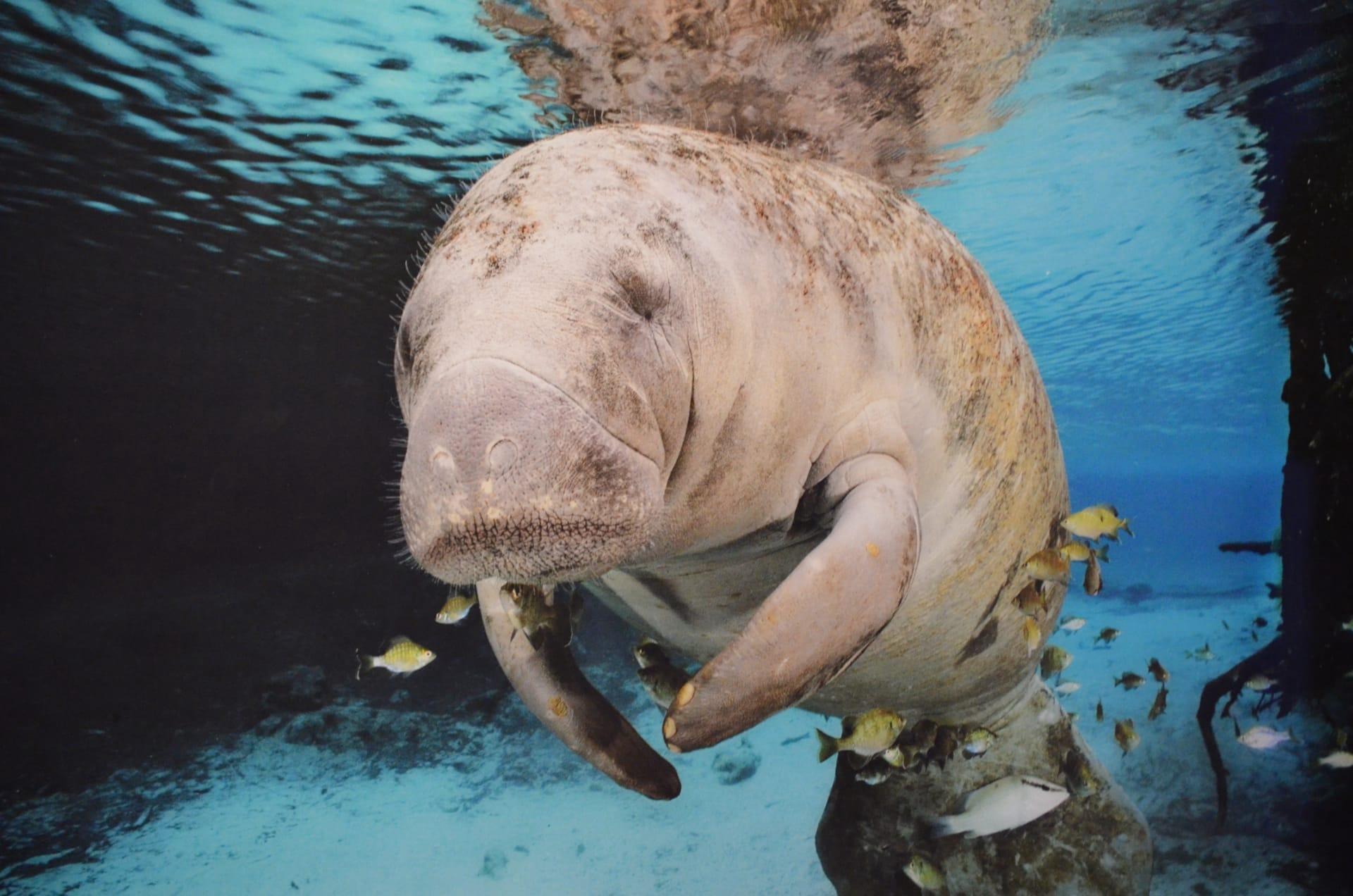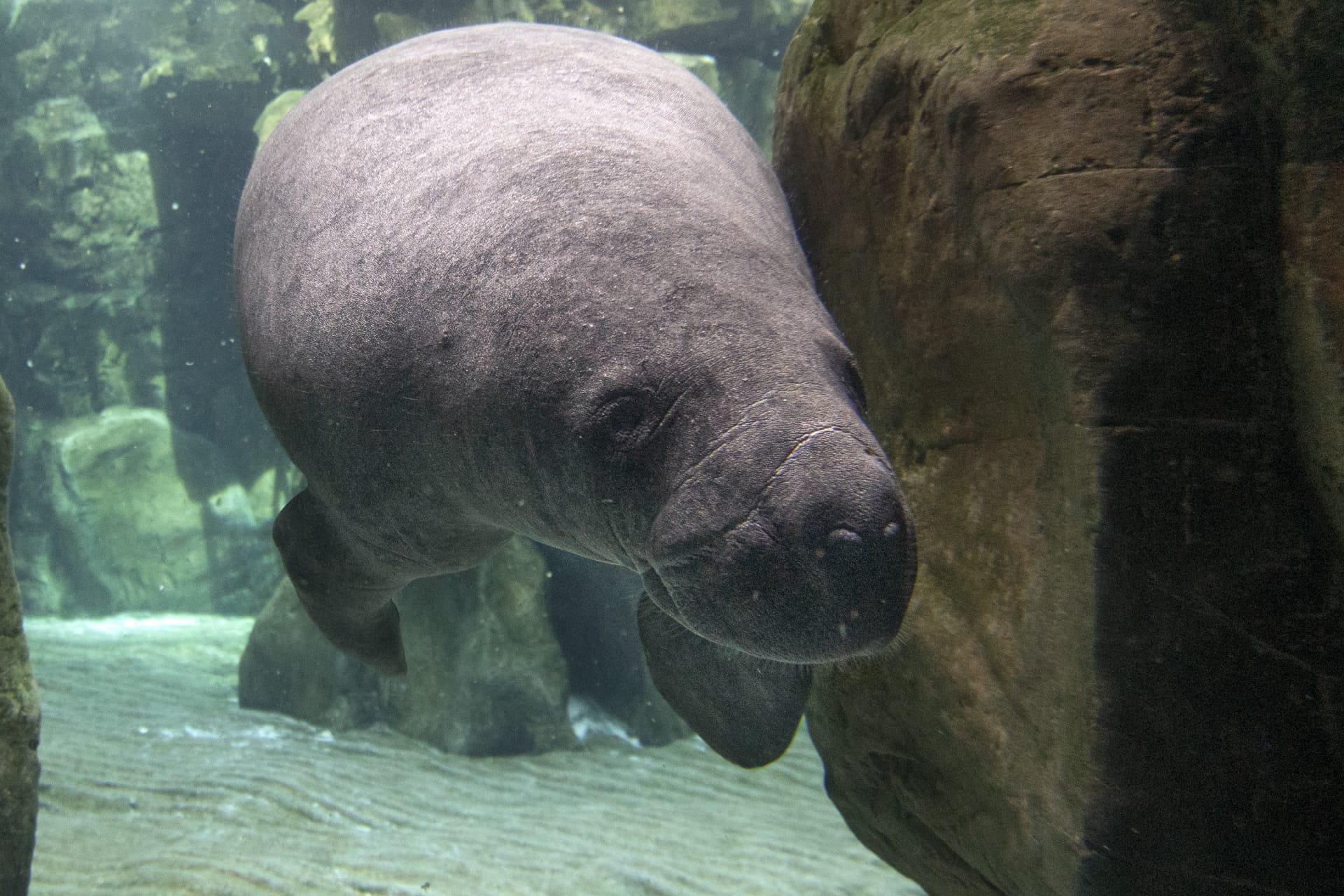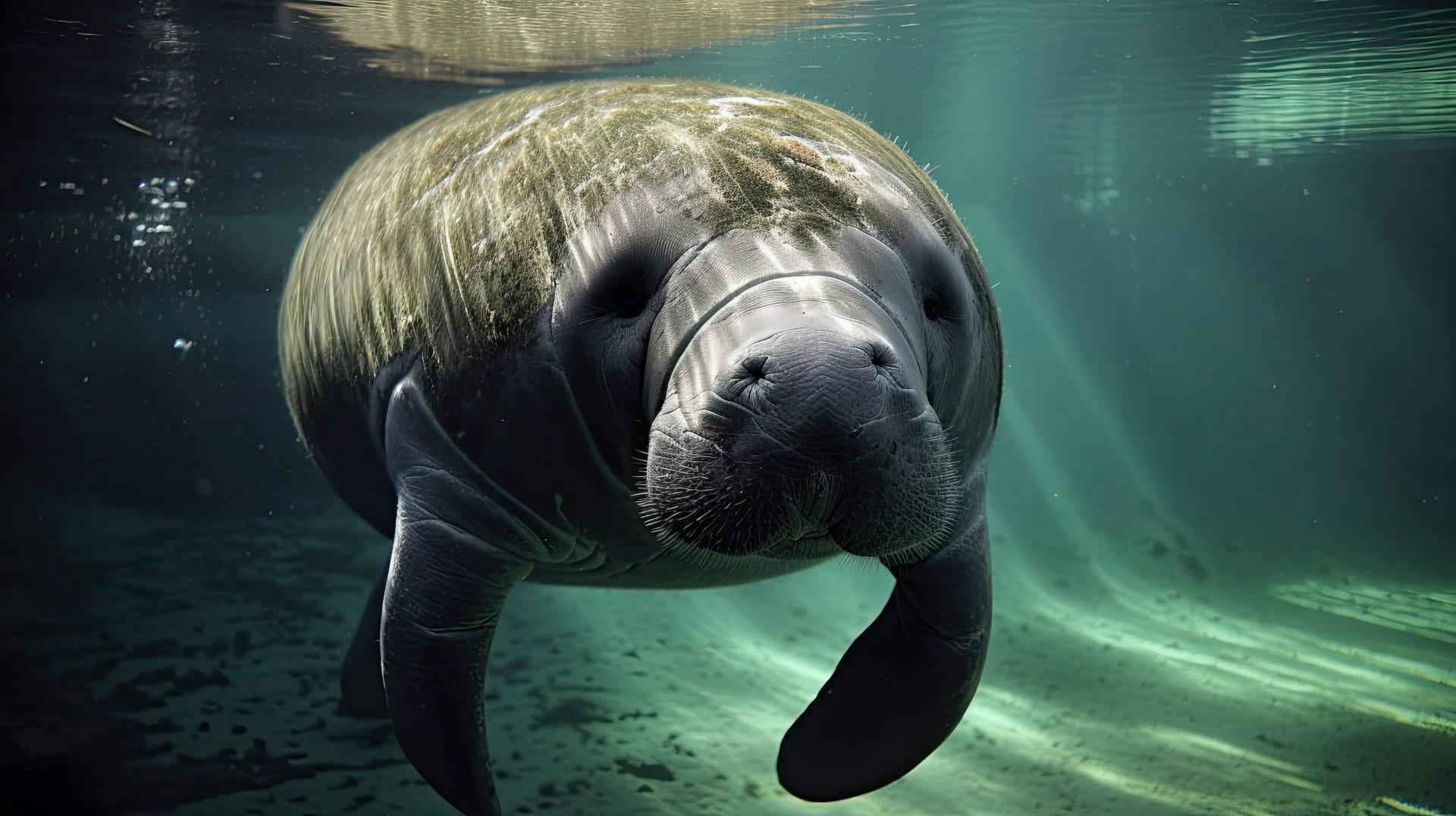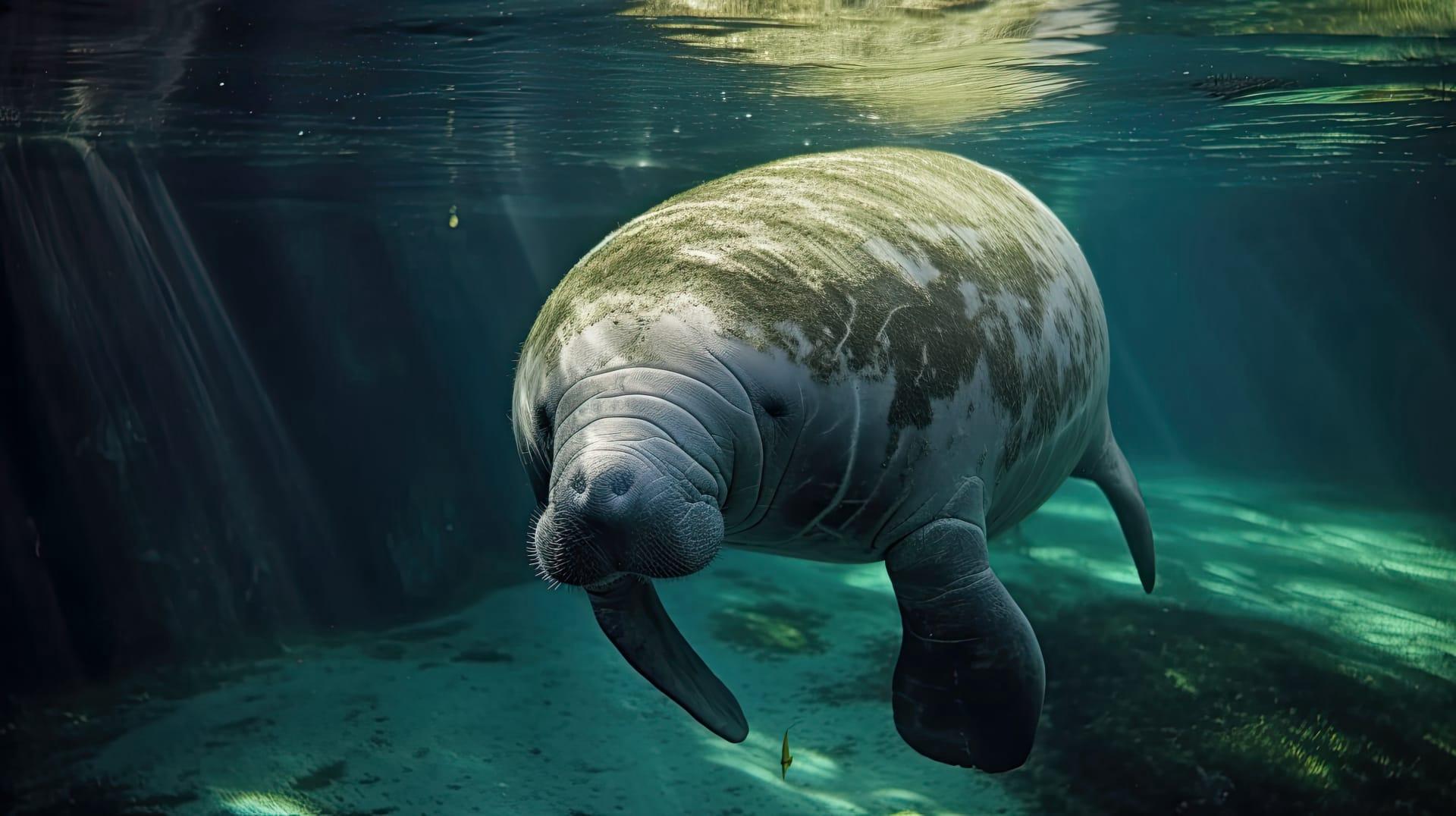Manatee Characteristics
- Home /
- Mini Encyclopedia /
- Animal /
- Manatee Characteristics
1
Manatees, often dubbed 'sea cows,' are fascinating marine mammals known for their immense size and distinctive shape. These gentle giants typically weigh between 800 to 1,200 kilograms and can grow up to 4 meters in length. With a lifespan that can stretch to about 40 years in the wild, they are long-lived creatures. Their bodies are spindle-shaped, aiding their slow, graceful swimming in shallow waters. Manatees possess a thick, wrinkled skin, usually gray or brown, with fine hairs scattered over their bodies. Their flippers, which are used for steering and sometimes for crawling along the bottom, have nails – a feature unique among marine mammals.
One of the most distinctive organs of a manatee is its prehensile upper lip. This flexible lip is split into two parts, each moving independently. It works like an additional hand, helping manatees gather and manipulate food. This lip is studded with bristles that aid in feeling and grasping vegetation. Manatees are herbivores, and this specialized lip plays a crucial role in their feeding as they consume about 10-15% of their body weight daily in aquatic plants. It’s a remarkable adaptation that allows them to effectively feed in their aquatic environment.

2
Question: What do manatees eat, and how much can they consume in a day?
Answer: Manatees are herbivorous creatures, primarily feeding on a wide variety of submerged, floating, and emergent plants in freshwater, brackish, and saltwater environments. An adult manatee can eat a whopping 10-15% of its body weight daily. To put that into perspective, considering an average manatee weighs around 1,000 kilograms, it can consume approximately 100 to 150 kilograms of vegetation each day. They spend about 6-8 hours a day feeding, using their unique prehensile lips to grasp and tear plants, demonstrating their impressive appetite and feeding capacity.

3
Manatees are known for their leisurely pace in water, usually swimming at a speed of about 3 to 5 kilometers per hour. However, they can surge up to 30 kilometers per hour in short bursts when necessary. Their large, paddle-shaped tail propels them through the water with gentle, sweeping motions. Despite their hefty size, manatees are quite agile in water, capable of doing rolls, somersaults, and even swimming upside down.
As herbivores, manatees have a simple yet efficient feeding mechanism. They graze on a wide variety of aquatic plants, including seagrasses, algae, and mangrove leaves. Their diet varies depending on their habitat and the season. Manatees have been observed to eat over 60 different plant species. Their large, flexible lips are key to their feeding, allowing them to gather and manipulate their food effectively. Manatees have a slow metabolism and low caloric needs relative to their size, which is why their diet mainly consists of high-fiber, low-nutrient food.

4
Manatees are typically found in shallow coastal areas and rivers where they can access abundant vegetation. They prefer waters that are about 1 to 2 meters deep and are known to inhabit both saltwater and freshwater environments. Manatees cannot survive in temperatures below 20 degrees Celsius, which is why they migrate to warmer waters during colder months. They are often found in Florida during winter, congregating in natural springs and warm-water discharges from power plants.
Reproduction in manatees is a slow process, contributing to their vulnerability as a species. Female manatees, known as cows, reach sexual maturity at about 5 years of age, while males, or bulls, mature around the age of 7. Manatees usually breed once every two years. The gestation period lasts about 12 months, after which a single calf is born. Calves stay with their mothers for 1-2 years, during which they learn essential survival skills. Manatee populations are challenged by their slow reproductive rate, especially when facing threats like habitat loss and boat strikes.

5
Book: "The Manatee Scientists: Saving Vulnerable Species" is an engaging book that takes readers on a journey with scientists dedicated to the study and preservation of manatees. Authored by Peter Lourie, the book was published in the United States in 2011. It provides an in-depth look into the lives of these majestic creatures, highlighting the challenges they face and the conservation efforts to protect them. The narrative weaves together scientific research with personal stories, making it an enlightening and heartwarming read for anyone interested in marine biology and conservation.
Book: "Manatees: Natural History & Conservation" is another informative book that delves deep into the world of manatees. Written by renowned naturalist John E. Reynolds III, the book was published in the United States in the early 2000s. It offers a comprehensive overview of manatee biology, behavior, and the urgent need for their conservation. Reynolds' expertise and passion for manatees shine through in his detailed descriptions, supported by scientific data and captivating images, making the book a valuable resource for students, researchers, and anyone fascinated by these gentle giants.